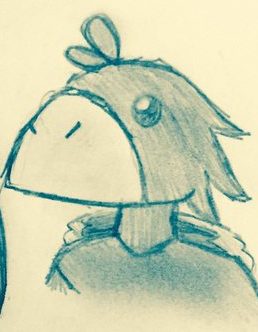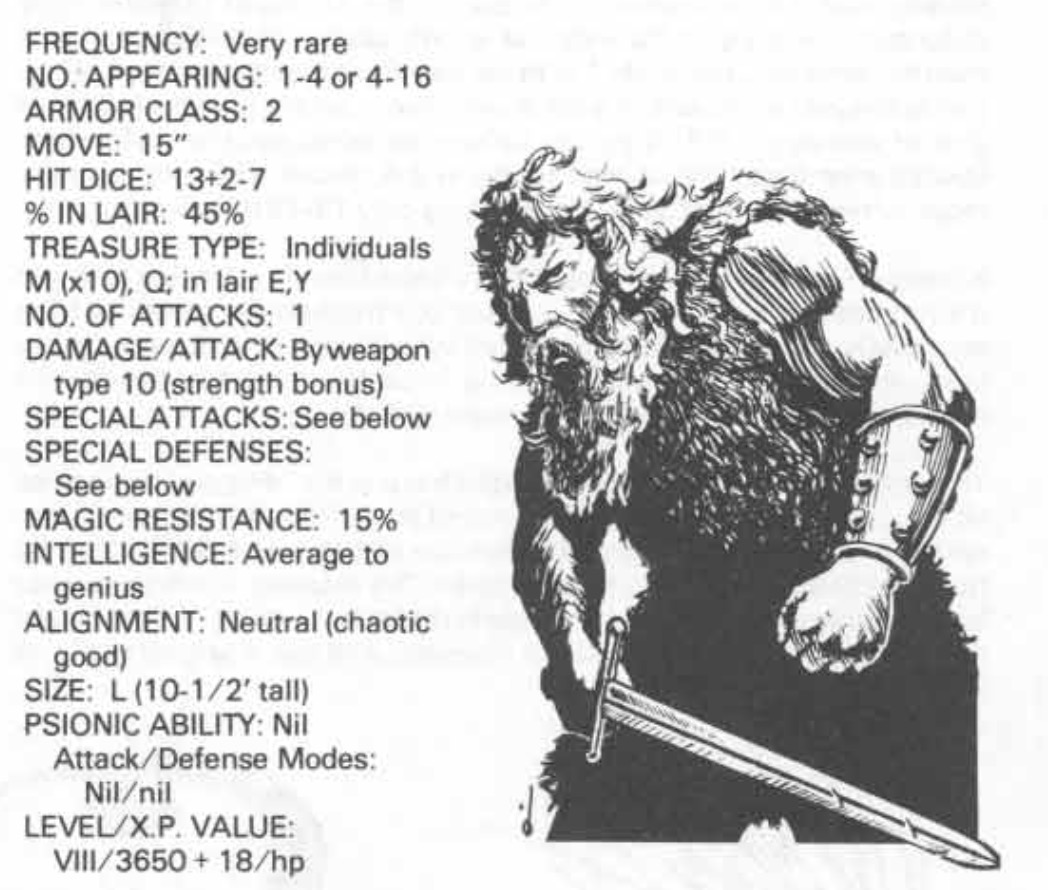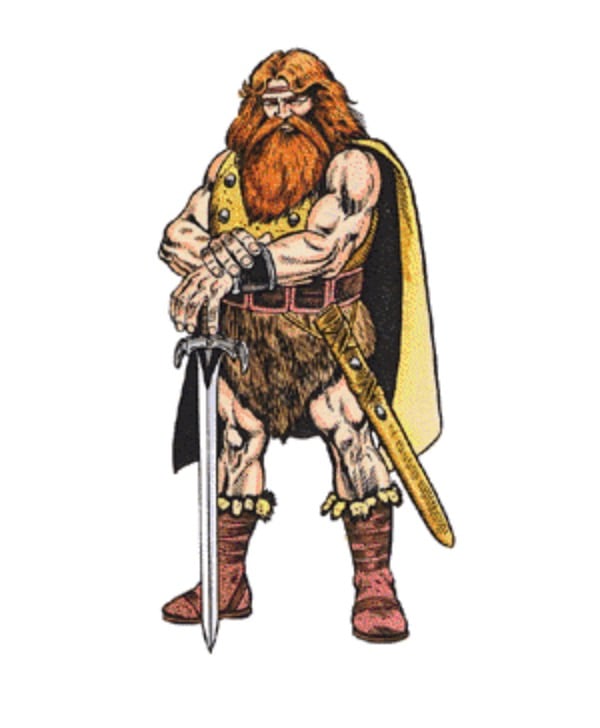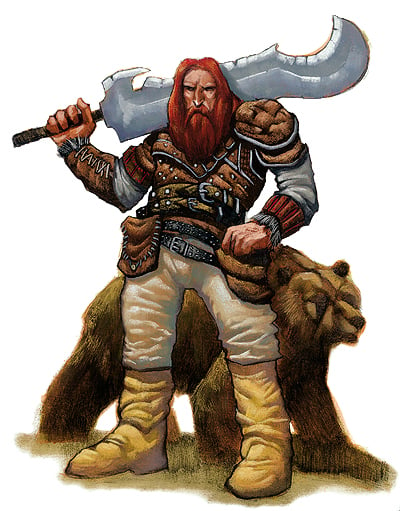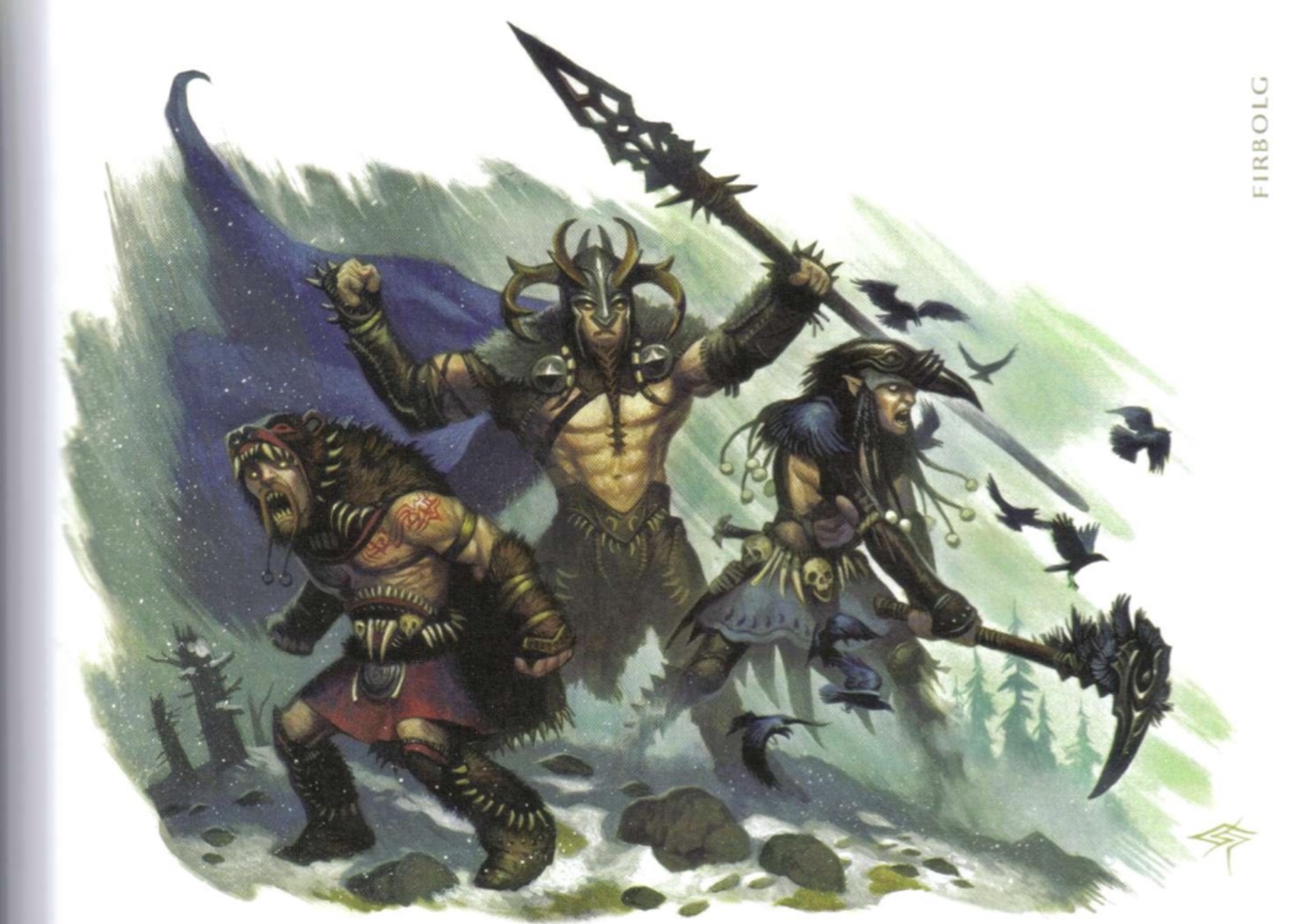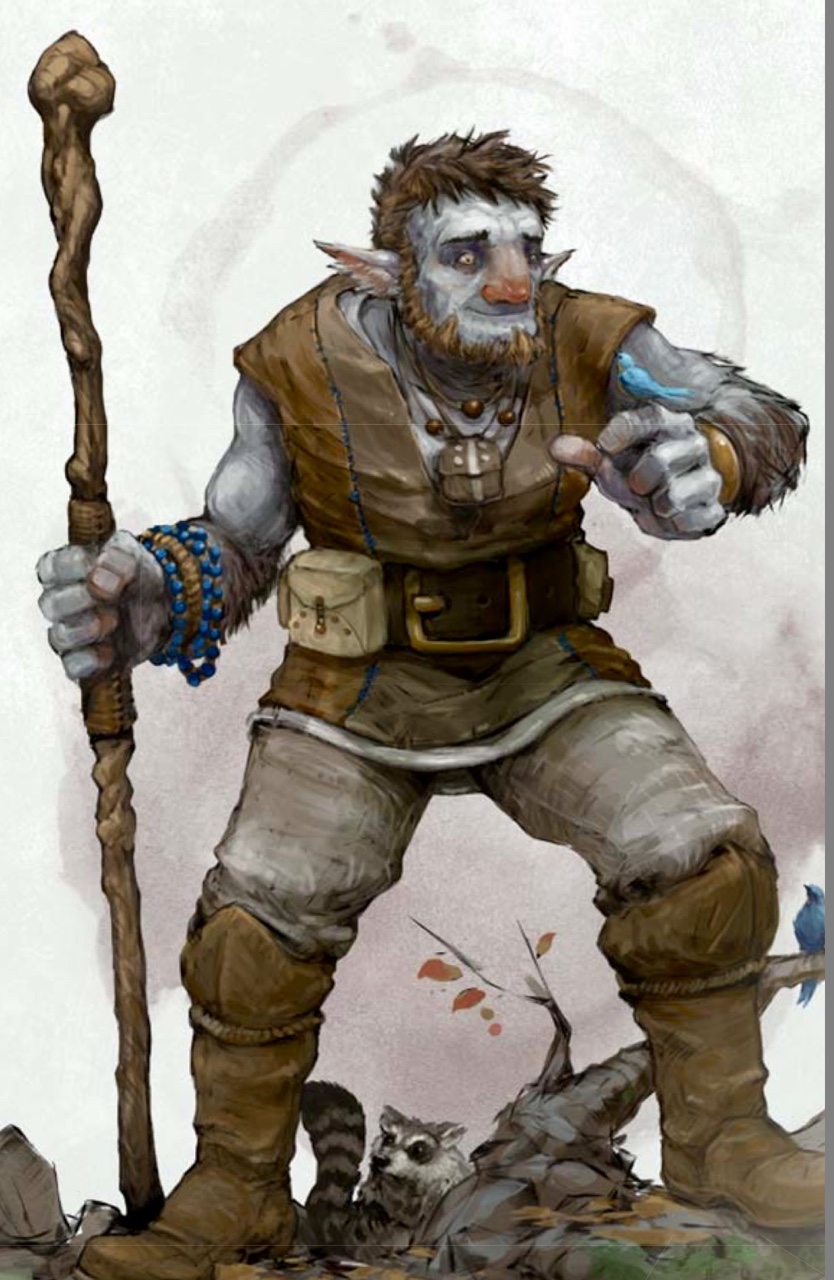D&D Monster Spotlight: The Transformation Of The Firbolg


Come trace the roots of a ‘Monster’ has gone from subrace of Giant to Fey protector of the Forests. Follow the transformations of the Firbolg.
Monsters change from edition to edition. Now, sometimes this is just an update, sometimes there are certain truths about a monster that don’t really change. With Beholders, for example, there are a few things that are always true: the central antimagic cone, the random eye rays that disintegrate, petrify, and so on. Other monsters, however, change radically from edition to edition. Sometimes the change can be tracked through the lore, kinda like the Kenku’s journey from mischevious roguish birdmen to wingless birdmen, cursed by their master because they were thieving magpies.
But still other times, the transformation happens swiftly. With monsters being reinvented–such is the case with today’s Monster, who makes the journey from fearsome foe to druidic player race all in the span of five (ish) editions. Today we present, the Firbolg.
Now, a quick note as to the origins of the name. This almost certainly comes from the mythological Firbolg or Fir Bolg/Fir Bholg, who were a group of people that went to greece and returned to Ireland, where they ruled it with their strange ways of carrying bags of soil or clay (Fir Bolg being translated as men of bags). In myths and legend they were said to be strong or swollen with battle fury, so maybe this is where the subrace gets its name from.
In 1st Edition, however, the Firbolg have a much different story.
First appearing in the Monster Manual II, Firbolgs were initially a minor race of giantkind–though of all of them, they were the most powerful. Cautious, crafty, and practically bristling with magical power, the Firbolg had a natural distrust and fear of humans, and lived in the wild places of the world. Hence the “very rare” frequency you can see above. Better armored than even the powerful Fomorian Giants, the Firbolg were this reclusive race that might, on occasion, encounter a small group in the wilds, unless you happened to stumble onto a clan meeting (10% of the time).
Power is the name of the game with these early Firbolg. Described as wielding human-like weapons but larger, they could do double normal damage, or they could use massive weapons one handed. Which they might want to do, because Firbolg possessed the innate ability to twice per round deflect missiles with a free hand (about a 75% chance to do so). On top of that, they have the Magic Resistance you can see above, as well as at-will detect magic, diminution (with double effect and double maximum duration), fools gold, forget, and alter self. And then if you encountered a Firbolg Shaman, they might have illusionist spells, determined at random.
So they can shrink themselves (or a foe), make their enemies forget why they were fighting, and that’s only scratching the surface of these guys. They still have this reclusive feel to them that carries through, but they are definitely more like giant celts at this point, making their home in the wilds and rarely venturing out. More prone to trickery and evasion than outright combat.
2nd Edition Firbolg, on the other hand are a little bit more mischievous. As before, they retain their magic resistance and spell-like abilities, all the trappings of the 1st Edition Fir Bolg, though they are much more defined as living in the remote places. They are grounded in these remote wildernesses thorugh their contact with druids, faeries creatures, and even elves.
They’re a little friendlier in this edition, characterized as enjoying pranks, and more likely to encounter strangers while wearing an illusory disguise, so the other person might not even realize they had encountered a Firbolg, or even which Firbolg they encountered, should they choose. The only other thing of note about 2nd Edition Firbolgs is that, with the exception of Storm Giants, they actively and aggressively repel any other giant-kin from their lands.
3rd Edition Firbolg carry on the 2nd Edition Tradition. As you can see from their art, they still favor the big red bearded type (or blonde, per their description). And in 3.x Firbolgs are still giant-kin, which means that they have a whole host of abilities that come just for being a Giant. This includes the large size (and ability to wield massive weapons), rock-throwing and rock-catching.
And because 3rd Edition was easier to represent general things like missile deflection, they get the deflect arrows feat, they get improved unarmed strike so they can punch pretty hard, should they not have their weapon for some reason. And they can trample their enemies–all while benefitting from Fast Healing.
Their magical abilities, however, are where the real buff lies. As before, they still get alter self and detect magic–though these are only once per day, so maybe buff wasn’t the right word here–they also get know direction, which is fine. But every Firbolg also has access to Feeblemind, which means that any fight with a Firbolg could potentially ruin your day. Doubly so if you’re a caster. Now, it’s worth mentioning that it’s only a DC 18 save–and this was in 3.x edition, where even a reasonably powerful fighter would make an 18 without even trying too hard. But still–this is all on top of the already considerable melee power.
Now in 3rd Edition they’re much more civilized. They live in well-fortified colonies in the depths of forests or in well-fortified cavern complexes, surrounded by guard towers and basically well dug in wherever they are. Funnily enough, they are a player race. With an ECL of 18–so, you know, players could play a Firbolg once they get to 19th Level.
4th Edition Firbolgs are much more like a Wild Hunt kind of thing. Here they are denizens of the Feywild, and they are fearsome creatures who exist only to hunt worthy foes. With things like the Hounder, the Hunter, Moon Seer, Bloodbear, and Ghostraven, they are all about attacking powerful foes.
Especially with their challenge set as firmly in the Heroic Tier. They can dominate that section and each one is designed to play well with the others. With things like Moonfire, the Firbolg can mark opponents and keep them from escaping. They’re all fairly mobile–so they can get where they need to. A Firbolg Hounder might knock you prone and position you between its allies, while the Hunter immobilizes you, setting you up so that the Moon Seer can either blast you with necrotic damage and the Bloodbear can grab you with its maul.
They’re all about pack tactics. And it’s not even explicit–none of the Firbolg have explicit synergies, but that’s because they don’t need them. Everything about them works together–even if they are much edgier, they are still there to take you out. And they’re some of the best elite monsters you’ll find. The most powerful ones can shift forms to take advantage of the situation–they are a ton of fun to play against your opponents.
And for extra bonus fun times, they have a high level Master of the Wild Hunt who’s there to bring down opponents who’ve been set up.
Lorewise, as mentioned, they are the keepers of the Wild Hunt in the Feywild. They don’t really settle into massive fortified compounds anymore, nor do they wander as nomadic clans. They are hunters. They worship a Maiden, Mother, and Crone, and are neither good or evil–but they are all about creepy moon powers and hunting down those who break their oaths. While they may be vastly different from their earlier counterparts, they are exquisitely designed. The Monster Manual 2 from 4th Edition has some of the best creatures WotC has ever made. There are a few clunkers in there, but by and large, this book is a great example of how to make creatures fun to play, both as and against.
Finally we have the 5th Edition Firbolg. Now, I quite like these guys–they are markedly different from their earlier counterparts. They aren’t weird beardy giants who are basically hiding out in the woods anymore. They’re definitely Fey creatures. And you can tell just by looking at them.
This might be one of my all time favorite pieces of player race artwork, because it tells you everything you need to know before you even look at the rules. They’re big, but gentle. The fur and blue skin kind of speaks to their inhuman nature, but then you have a raccoon and a couple of birds hanging out–the color palette is amazing, even the staff tells you what you need to know. Nature loving folks who don’t really want to have much to do with the world outside of their animal friends.
And that’s exactly what they are. Humble Guardians with an affinity for nature. They are gentle guardians right up until provoked, and then it’s all about unleashing their might in a single overwhelming attack. Your standard Firbolg might not make the best adventurer, but they come with a few helpful ways to get them on the road, clan slain in an attack, separated from the tribe, or even just on a quest.
I don’t know why they transitioned from monster to player race, but they fill a niche that isn’t really there. They’re not as quirky as gnomes, and they’re like a gentler (at first) goliath. At any rate, if you’re looking for a forest-based encounter, the Firbolg provide you with many options.
Firbolgs are the biggest fans of happy little trees.

